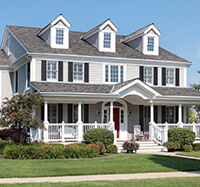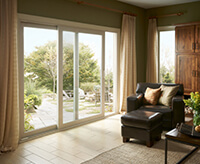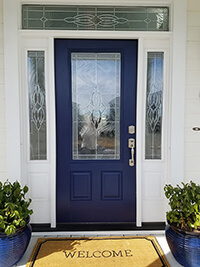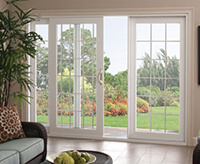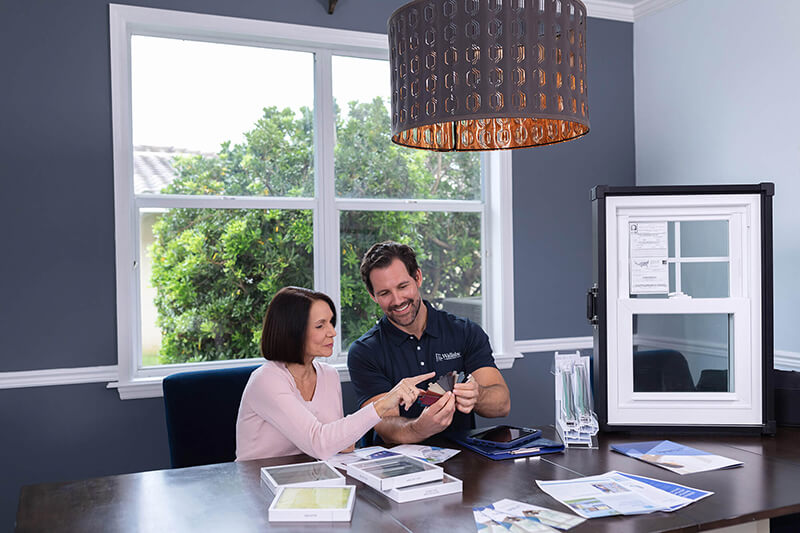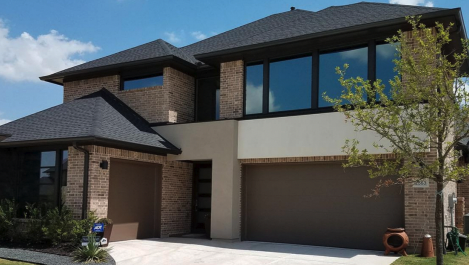
Window Materials: What’s the difference?
When it comes to shopping for new or replacement windows, the options and decisions to make can be overwhelming. From the optimal material of the frame and sash, to the glass package and grid choices, and everything in between, the options can often be unlimited.
Window replacement shouldn’t be so stressful. That’s why Wallaby Windows is excited to offer a “pane-free” process in which we custom tailor a solution to your needs and budget with a focus on efficiency and cost-effectiveness. By combining technology with our industry experience and effective discovery process, we can simplify your decision with curated recommendations that increase your home’s curb appeal, maximize its energy efficiency, and won’t break the bank.
We’re not your run-of-the-mill window service with a single brand or type of window to sell you. Our goal is to solve your problem at a fair price and ensure you’re completely satisfied with your experience. Through extensive strategic partnerships with multiple suppliers, we’re able to source most any window brand on the market to suit your needs and budget. Not only that, but we’re able to offer you those same premium brands at oftentimes more affordable rates and not to mention a better service.
Not only do we offer products for every need and budget, we also provide exceptional installations using the best materials and finest craftsmanship. Replacement windows are only as good as their installation. Here at Wallaby Windows of Nashville, we leave no stone unturned to ensure you receive the highest quality experience from start to finish. That’s the Wallaby Difference!
Below you’ll find more information on the materials to choose from when replacing your windows. They each add value in their own way across a range of prices so your decision will likely come down to cost and aesthetics. Your expert window consultant with Wallaby Windows can help guide you through these options to ensure you have the perfect solution.
Window Materials
Deciding between the different material choices comes down to four basic elements; cost, curb appeal, maintenance, and energy efficiency. Each material brings with it a different aesthetic, price point, upkeep, and thermal performance. Here are the primary materials to choose from and their fundamental differences to help you make a more informed decision.
Vinyl ($):
Vinyl windows are considered one of the most popular options today due to their fantastic efficiency ratings, multitude of customization options, and their cost-effective price point. They are diverse in their ability to customize features, colors, and grid profiles, as well as come in nearly every shape and size imaginable. These multi-chambered plastic frames and sashes are highly durable, structurally sound, and great insulators through all types of climate conditions and seasons. These extruded units reduce convection, promote structural integrity, offer longevity, require little to no maintenance, and are incredibly affordable compared to other materials. If you’re looking for a great option to save money upfront and on your utility bills, look no further.
Aluminum ($$):
Aluminum windows are a popular and trendy choice for many homeowners looking for something sleek and low maintenance. Offering a more contemporary appeal, these windows are typically more narrow in frame construction and have larger glass units for increased visible transmittance. Though they are not as heavy as other materials due to their metallic composition, they are inherently strong and durable. That said, they are less energy efficient with thermal transfer, especially in extreme climates where you’re likely to spend more on heating & cooling your home. Regarding price, aluminum windows are typically less expensive than their wood counterparts and often comparable to that of vinyl but they do tend to have a longer lifespan on average of 20 to 25 years.
Wood Clad ($$$):
Wood Clad windows are growing in appeal due to their combination of aesthetics, efficiency, and required maintenance. These units have a natural wood interior, typically treated pine, and an aluminum exterior, although some manufacturers can do vinyl or fiberglass clad exteriors. Each side can be customized with select colors and finishes, though the options are not as many as other materials. The wood clad design and construction offer a beautiful elegance to the inside of your home while creating a stylish look with superior air and water infiltration protection from the aluminum face on the outside of your property compared to that of all wood. This material is extremely versatile, comes in most operating styles, and can be customized to fit most any home design. Their premium construction and diversity come with a price at roughly 2 to 3 times as much as vinyl, but the beauty and benefits are hard to beat.
Fiberglass ($$$):
Fiberglass windows are an exceptional material that is nearly 8 times stronger than vinyl but can be 2 to 3 times as expensive. Fiberglass units are manufactured with a composite polymer and glass fiber construction that make it one of the highest quality and strongest materials you can use for your windows and doors. This highly durable material is a fantastic insulator, namely in warmer climates, due to its ability to resist heat and deflect UV rays better than all other materials. They do not fade, rust, or rot and similar to vinyl, they are extremely resistant to moisture. Due to their strength and thermal superiority, it is estimated that fiberglass windows can last for up to 50 years. Time will certainly tell but if you’re looking for an optimal product on both aesthetics and energy performance, fiberglass is a great investment.
Wood ($$$$):
Wood windows are the most traditional material available and offer a classic and authentic beauty to your property. They perform well as highly energy efficient with little thermal transfer and provide that hand-crafted curb appeal. However, they are also one of the more expensive materials upfront as well as long-term due to their intense maintenance and upkeep requirements year after year. Though they can last for decades if properly maintained, they are most susceptible to decay and warping, especially in climates with extremes between warm and cool seasons such as in middle Tennessee.
Conclusion
In summary, there are several options to choose from when it comes to replacement window materials. It largely comes down to personal preference and what your objective is. If you expect to stay in your home for less than 10 years and/or your primary concern is price or the ability to customize, vinyl is the first material to consider. But if you’re less price sensitive and looking for a high quality window that looks great and performs well as a long-term investment, you can’t go wrong with either wood clad or fiberglass.
At Wallaby Windows of Nashville, we’re proud to be your trusted advisor for all of your replacement window and door needs. From Franklin to Brentwood, and Murfreesboro to Columbia, you can rest assured we have a solution to your problem and can help you accomplish it hassle-free, affordably, and efficiently. Let us show you the diversity of product lines we have available to us along with our “pane-free” process to help you with your home improvement dreams. We can’t wait to work with you!
